What is Mountaineering?
Mountaineering is a challenging outdoor activity that involves climbing mountains or other steep terrain using specialized gear and techniques.
It requires a high level of physical fitness, technical skill, and mental endurance, and can be done in a variety of settings, including rock faces, snow and ice-covered slopes, and mixed terrain. Mountaineering can be dangerous and requires careful planning, preparation, and training to ensure the safety of everyone involved – it is a physically demanding sport often paired with extreme weather conditions.
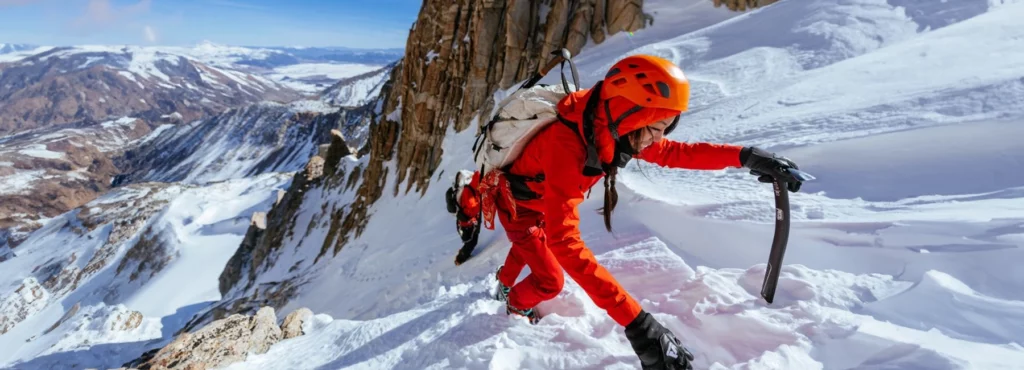
Mountaineering Tips for Beginners
As a beginner mountaineer, there are several things you should keep in mind before embarking on your first climb. Firstly, it is crucial to have a good level of physical fitness and to be well-prepared for the climb ahead. This includes proper clothing and footwear, food and water, and any necessary climbing gear. It is also important to research the climb and its difficulty level, as well as the weather and terrain conditions.
Secondly, safety should always be your top priority. This means following all safety protocols and guidelines, being aware of potential hazards such as rock falls or avalanches, and carrying proper safety equipment like a helmet. Thirdly, it is essential to climb with a partner or in a group and to communicate effectively with them throughout the climb. Finally, as a beginner, it is wise to take a mountaineering course or hire a professional guide to teach you the necessary skills and techniques for safe and successful mountaineering.
If you’re just beginning your mountaineering journey, this guide includes some essential gear and tips to get you started:
What equipment is needed for mountaineering?
There are a few essential items that every climber must bring when attempting a mountaineering objective such as crampons, an ice axe, a helmet, a harness, rope, and other tools to navigate steep terrain and overcome obstacles. Having this gear will help protect and keep you safer, but knowing how to use these are just as important as having them.
Ice Axe – Petzl Summit 2 Ice Axe
An ice axe is an absolute must-have when mountaineering – your hiking pole will not suffice. It helps provide stability on the mountain and allows you to self-arrest in case of a fall. When picking out your ice axe length, keep in mind this one quote from Yvon Chouinard: “if 55 cm doesn’t reach the snow then the slope doesn’t warrant using an axe”.
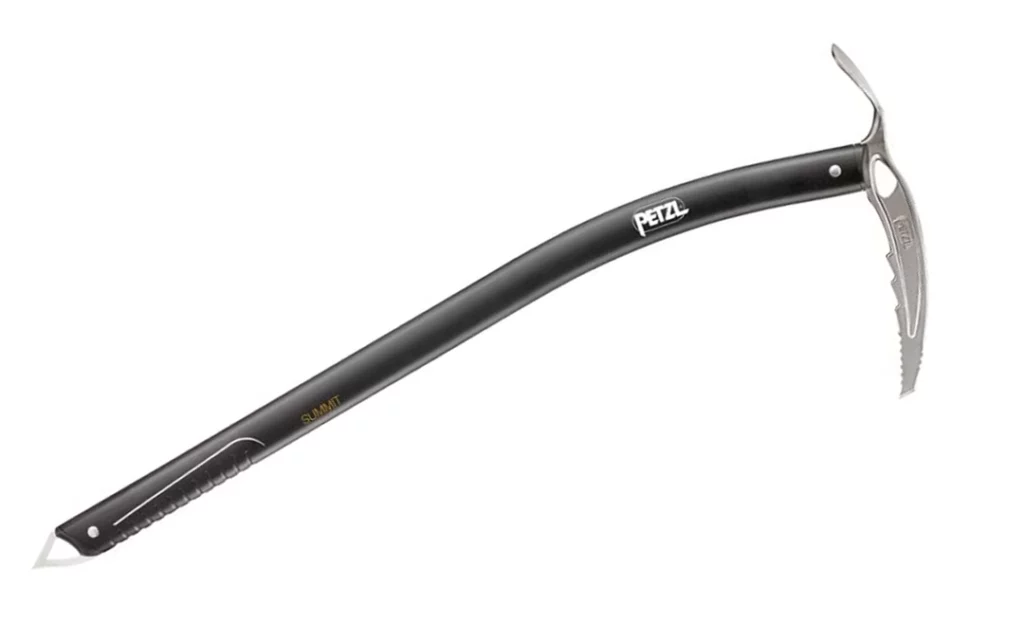
Crampons
A 12-point steel crampon is good for general mountaineering on steeper terrain because it has more purchase while a 10-point crampon is suitable for glacier travel.
Understanding the types of crampon bindings:
There are a few variations of bindings/ attachments and your crampons will need to be compatible for your boots depending on if you have any toe &/or heel welts:
Crampons vs Microspikes:
Microspikes simply will not cut it when mountaineering. Microspikes are a traction device with tiny spikes on the bottom sole of the shoes to help maintain traction when hiking on icier terrain but it doesn’t provide any traction along the edge of the boot which is necessary for steeper terrain.
The front attaches with a wire bail and the heel clips in; you need toe and heel welts on your mountaineering boots. The Petzl Vasak Leverlock crampons come with both front binding options.
(Strap-on crampons) You can wear these with any boots and it does not require toe or heel welts.
The front attachment straps on and the heel attachment clips in; you need a heel welt on your mountaineering boots.
Safety first – these gear are all meant to help you mitigate risks on the mountains, but a helmet could actually help keep you from what could be a more serious injury in case of an accident. You can do all the right things on the mountains, but accidents happen and a helmet could save your life.
The Black Diamond Vision helmet is a lightweight climbing helmet, made of a composite combination of foam for durability. If you’re looking for a more budget-friendly option that’s slightly heavier, the BD Half Dome is a classic climbing helmet
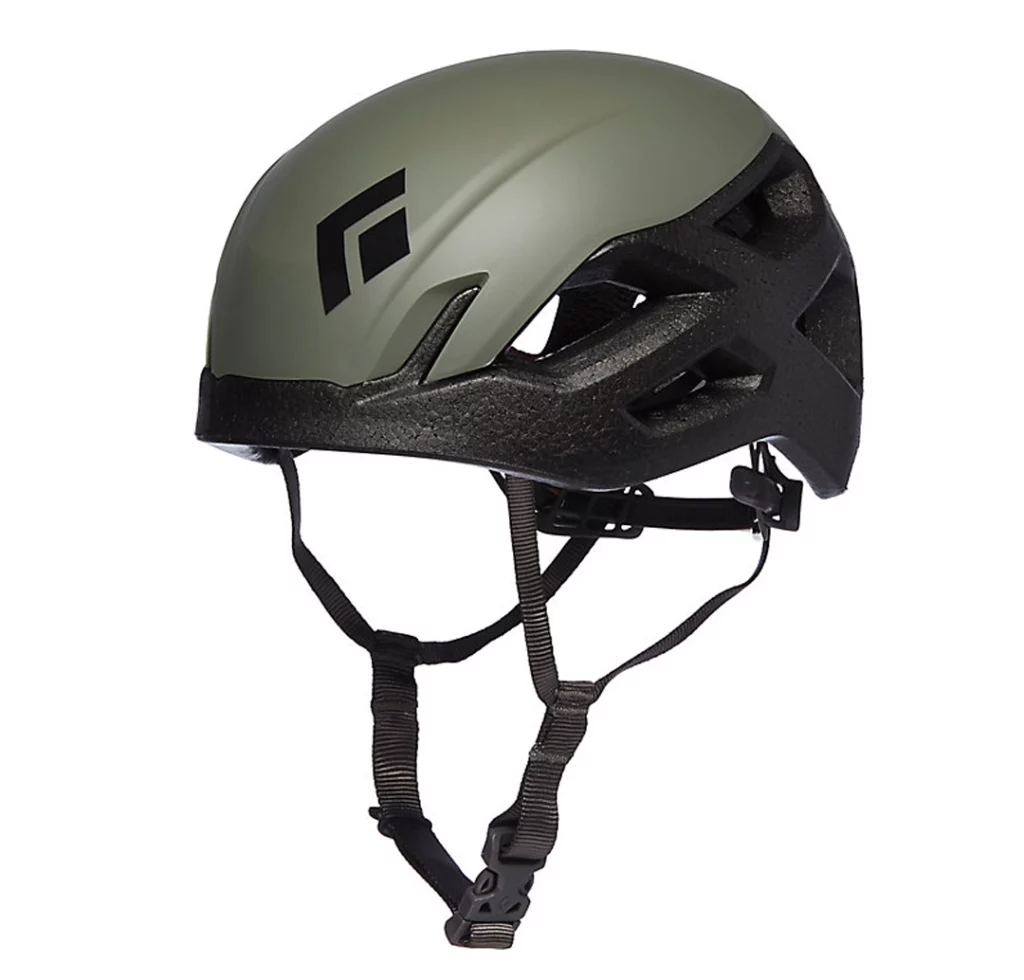
Harness & Rope
If it isn’t obvious, the harness keeps you attached to the rope which helps keep you safer on the mountains. It may not be something you feel like you need on all mountaineering objectives depending on your experience and terrain, but it’s good to have on you just in case.
If you’re new to mountaineering but you are a rock climber, your climbing harness will suffice. I started with my Black Diamond Momentum while I learned but as I moved on to bigger and more overnight objectives, I swapped to an alpine harness, the Petzl Fly – what a difference in size! The biggest differences between a rock climbing harness and an alpine harness are their size, weight, and comfort.
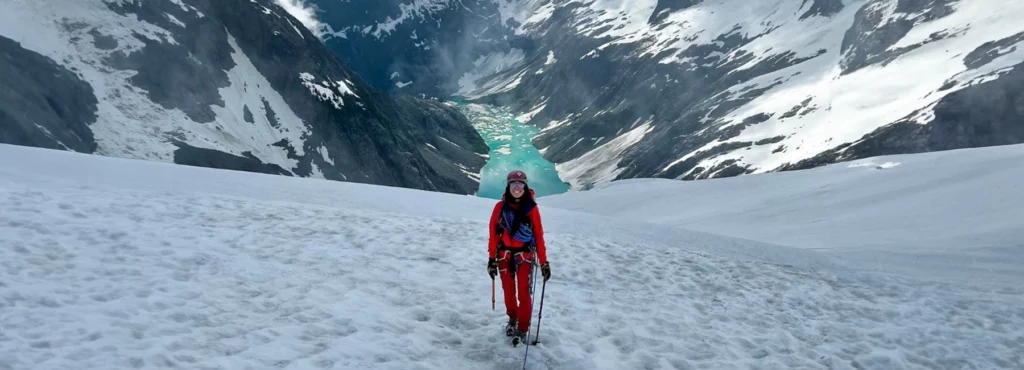
What to wear mountaineering?
Mountaineering Boots
Hiking boots are not suitable for mountaineering because they are not designed to provide the specific features required for mountaineering.
Mountaineering boots are made with stiffer soles, higher ankle cuffs, and more durable materials than hiking boots to support the feet and protect them from injuries in extreme mountain environments. Mountaineering boots also have specialized soles with deep treads to provide better traction on slippery or rocky terrain, and are constructed with waterproof and breathable materials to keep the feet dry and comfortable in harsh weather conditions, such as rain, snow, and freezing temperatures.
In contrast, hiking boots are designed for more moderate terrain and may not have the necessary stiffness or support needed for steep or uneven terrain. Therefore, using hiking boots for mountaineering can lead to discomfort, injury, or even accidents.
There are many types of mountaineering boots which mostly come down to 3-season mountaineering boots, insulated winter mountaineering boots, and expedition mountaineering boots. The ones you will get will depend on your objective.
Best Mountaineering Boots for Beginners:
La Sportiva Trango Cube
3-Season Mountaineering Boot
La Sportiva Nepal Cube GTX
Insulated Single Layer Winter Mountaineering Boot
La Sportiva Olympus Mons Cube
Insulated Single Layer Winter Mountaineering Boot
Mountaineering Gloves
You do not want to use your ice axe without gloves – just take my word on this. My favorite mountaineering gloves are the Hestra Army Leather Blizzard and Eddie Bauer Guide Lite Gloves.
Clothes for Mountaineering
As a woman who runs very cold and does not generally do well in the winter, I’ve learned that the proper layering system makes a world of difference in your outdoor experience. I’ve found these to be the best layering pieces for mountaineering because of their warmth, weight, and breathability. Breathability is the key to all of your layering pieces because once you’re wet from sweat, you’ll be very cold and it’s hard to warm back up if there’s no sun to dry off your baselayers. Trust me, I’ve learned the hard way plenty of times.
Base Layer:
The Patagonia Capilene Air is a good base layer for mountain climbing, and even just winter hiking – really just any cold-weather activities that involve a lot of movement; it offers a lot of warmth yet it is extremely breathable. The hooded version is a nice touch so you don’t need to worry about an additional beanie liner to go under your helmet and it protects your face better from the frigid winds.
Mid Layer: The North Face Fleece and Eddie Bauer Fleece
Mid layers offer a little extra warmth with a lot of breathability still. I have two mid-layers that I really like – both are fleeces and the one I wear will depend on the rest of my layering system.
The North Face’s Futurefleece Full-Zip Hoodie
This layer feels as thin as a baselayer, but it’s not a mid-layer. I typically wear this one when ice climbing or attempting a high-altitude climb.
Eddie Bauer’s High Route Grid Fleece ¼ zip
This one is slightly thicker than TNF layer above and more affordable. I typically wear this one when doing when mountaineering at lower elevations and want a layer that will keep me warmer when I know I will be wearing it while walking on flatter terrain.
Outer Layer: Down Jacket
I again have two options that I really like; the main difference is their weight and heft of them.
The North Face Summit Series Breithorn 50/50 Hoodie
This is a very lightweight down jacket and best when your gear weight is a considerable factor in your trip planning. The 50/50 construction of it allows for more breathability while the down baffles still keeps you plenty warm.
Mountain Hardwear Stretchdown Jacket
This is a very lightweight down jacket and best when your gear weight is a considerable factor in your trip planning. The 50/50 construction of it allows for more breathability while the down baffles still keeps you plenty warm.
Softshell Jacket: Rab Kinetic Plus
A softshell jacket is good when you need something more than a windbreaker but less than a hardshell jacket if that makes sense. If you aren’t expecting any precipitation, then leave your hardshell behind and just grab your softshell jacket. I’ve found that a windbreaker paired with an outer insulating layer does the trick as well, but if you know strong winds are to be expected, bring the softshell. The Rab Kinetic Plus is an amazing jacket because it’s waterproof yet still offers good breathability – it’s one of my favorite layering pieces that makes it onto every trip with me in the Fall, Winter, and Spring.
Parka: The North Face Pumori
The Pumori Parka offers one of the best warmth-to-weight ratios for high-altitude mountaineering – think Himalaya climbing, Andes, or Denali. This is an expedition-grade parka. It’s probably not a layer you will need when mountaineering the lower 48 states but it is a belay parka that comes in handy for, as you guessed it, belaying. I use this for belaying while ice climbing and 6,000 m climbing.
Base Layer Pants: Patagonia Capilene Air
When you’re climbing a mountain in warmer conditions like Spring or Summer, you probably won’t need baselayer bottoms. But in the winter and at very high altitudes – it will make a huge difference in your warmth.
Softshell Pants: Mammut Courmayeur SO Pant
The same concept as the softshell jacket applies here – You will want a durable layer that can handle the wind better than leggings or standard hiking pants which are usually made to be very breathable, maybe too breathable. Mammut’s Courmayeur softshell pants are more trim than other pants I’ve seen and tried – it’s one of the reasons I prefer them. I am used to wearing leggings for all of my adventures in the mountains so I personally prefer less baggy clothes. These aren’t too tight, nor too loose, and extremely durable with some stretch.
Down Pants: Norrona Lyngen Down850 Knickers
These are an optional layer depending on your objectives. Full-side zipped pants make it convenient to toss on when you’re already moving and have your crampons on already.
Sun Protection
Do not underestimate the power of the sun, even in the middle of winter or on a cloudy day. At high altitudes, the sun’s UV rays are stronger and more intense due to the thinner atmosphere. This can cause sunburn, premature aging of the skin, and an increased risk of skin cancer. Sunblock helps to block these harmful rays, and hydrates and protects the skin.
The snow and ice on mountains can reflect up to 80% of the sun’s UV rays, which can be damaging to the eyes and potentially cause snow blindness.
Glacier glasses or goggles are good if you anticipate strong winds. If you’re planning to climb at very high altitudes, know that there is such a thing as your eyeballs freezing if you don’t wear glasses, as my friend told me about his experience climbing on Everest summit day without goggles on.
Anytime you are recreating outdoors, whether it’s hiking, swimming at a lake, skiing, or climbing, you should always put on sunscreen! Learn more about summer hiking sun protection gear here.
Avalanche Gear – Beacon, Probe, and Shovel
This would depend on the objective you are doing and the conditions and potential hazards.
Radios
Communication with your partner/ team is extremely important and I’ve found having a radio to talk to your partner can be very helpful as you can’t always hear when yelling out.
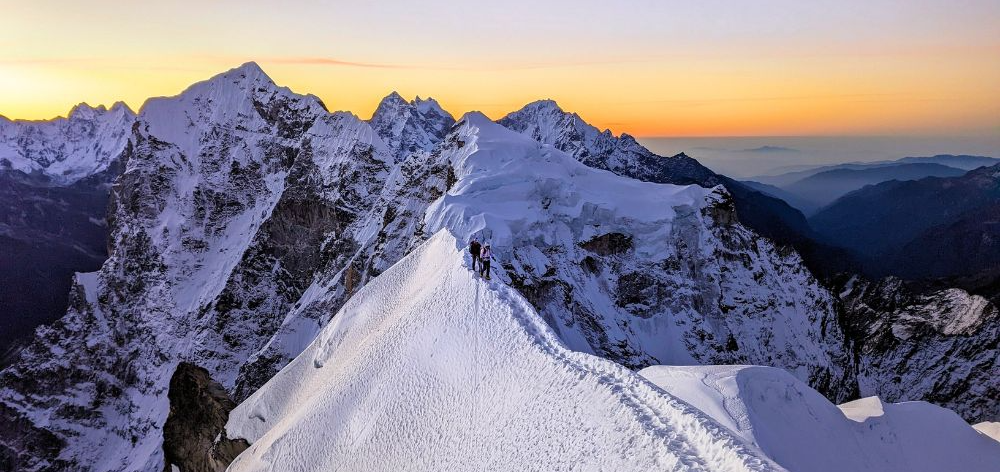
California Mountains to Climb for Beginners:
- Avalanche Gulch Route on Mount Shasta
- Mountaineers Route on Mount Whitney
- Baldy Bowl in Southern California
Best Mountain to Climb for Beginners at High Altitude
Ready for a high-altitude mountain climb? Nepal is home of Mount Everest and many high altitude peaks, but there are beginner-friendly climbs such as Lobuche East 6,119 m (20,075 ft). Tiffany still has some spaces available on her upcoming group trip in Nov 2023. Get more details on the Lobuche climb here and join her on a once in a lifetime adventure in 2023.
Full Mountaineering Gear List
- Ice Axe
- Crampons
- Helmet
- Harness & Rope
- Boots
- Gloves
- Base Layer
- Mid Layer
- Outer Layer Down Jacket
- Softshell Rain Jacket
- Parka
- Base Layer Pants
- Softshell Pants
- Down Pants
- Sunblock
- Eye Protection

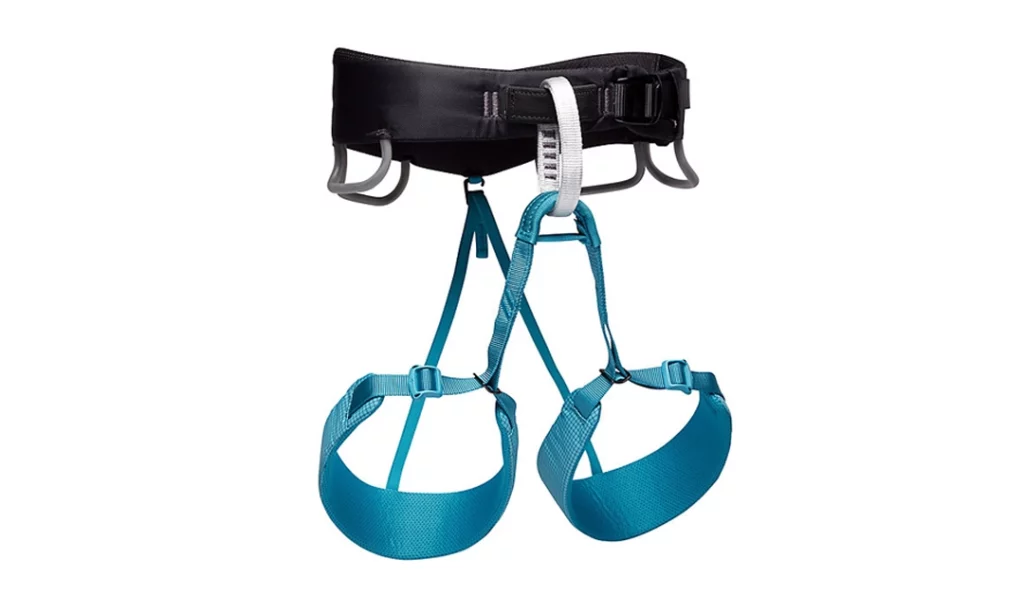
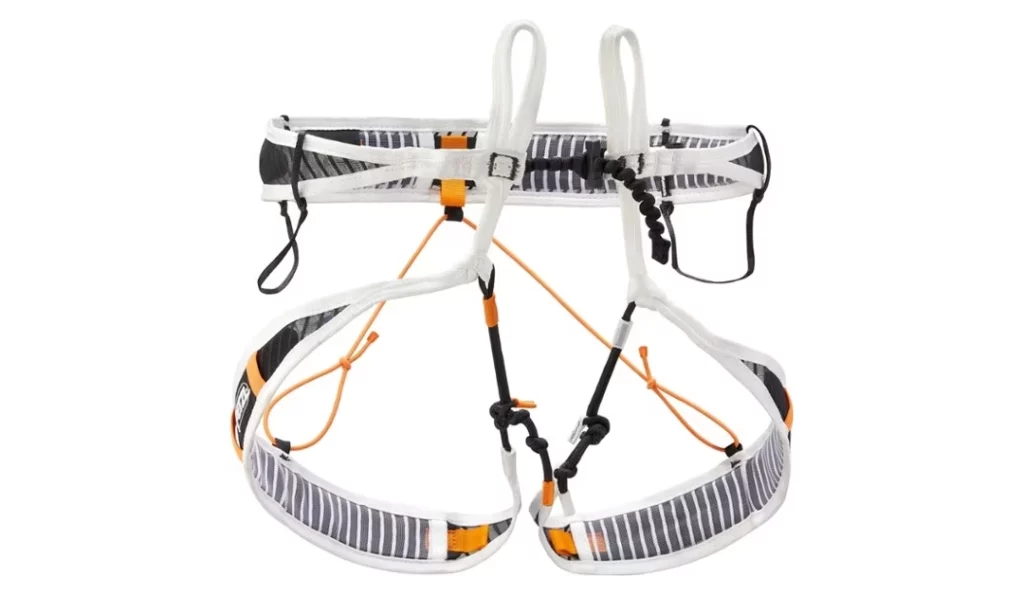
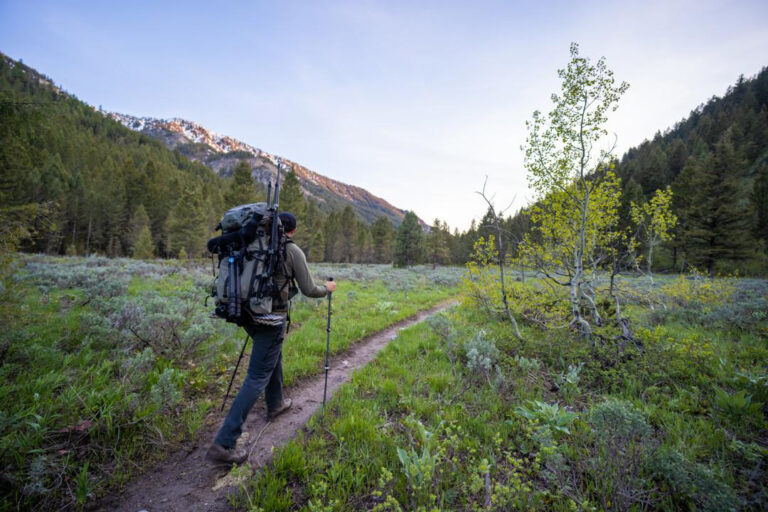
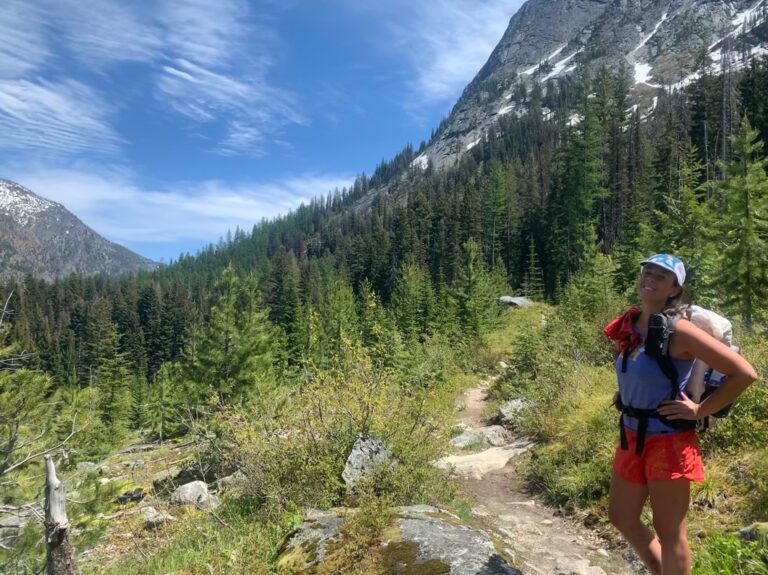
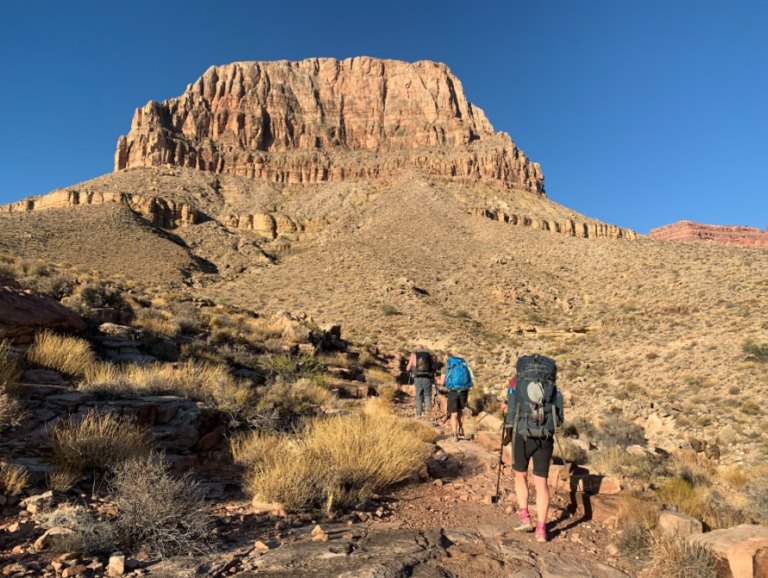
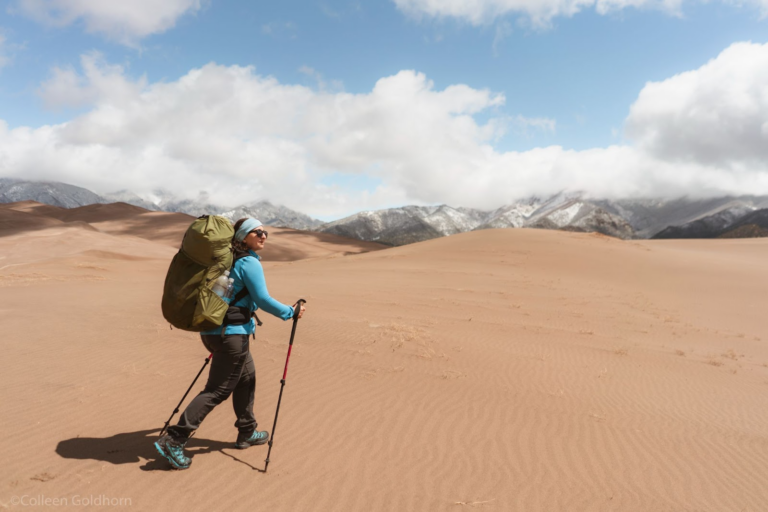
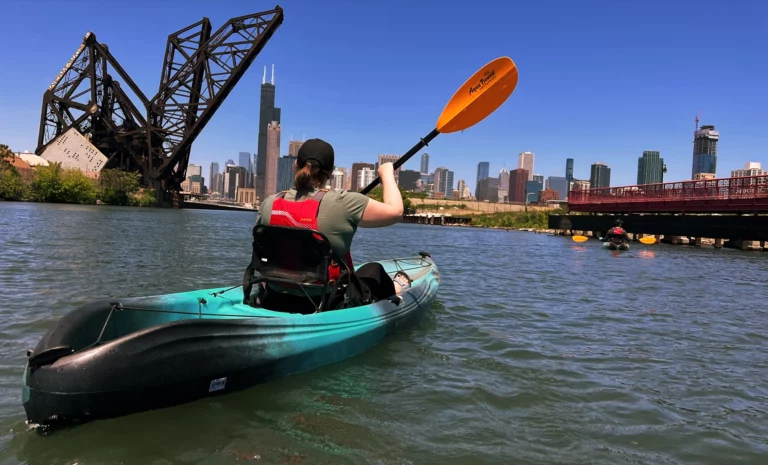

I could not refrain from commenting. Exceptionally well written!